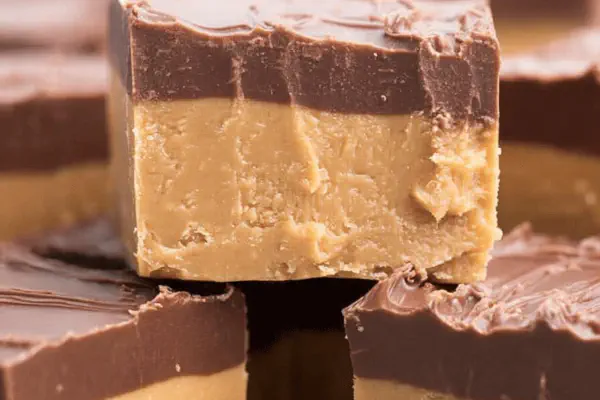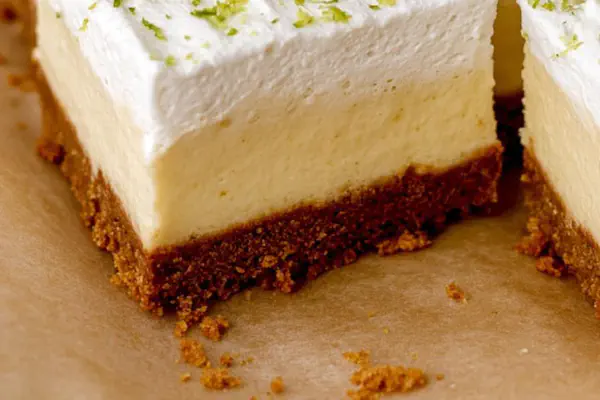Peanut Butter Bars Remix

By Emma
Certified Culinary Professional
Ingredients
- 12 tablespoons unsalted butter softened
- 1 cup creamy almond butter for twist
- 1 cup creamy peanut butter separated
- 3⁄4 cup granulated sugar slightly reduced
- 3⁄4 cup packed brown sugar light
- 2 large eggs room temp
- 1 1⁄2 teaspoons pure vanilla extract
- 1 teaspoon ground cinnamon twist for salt
- 1 teaspoon baking soda
- 1 1⁄2 cups all-purpose flour adjusted
- 1 1⁄2 cups old-fashioned rolled oats
- 1 cup powdered sugar sifted
- 3 tablespoons unsweetened cocoa powder
- 3 tablespoons heavy cream
- 1⁄4 teaspoon salt
- Pinch sea salt for frosting tip
About the ingredients
Method
- Heat oven to 345°F. Oil a 12x17 jelly roll pan lightly, ensuring no sticky patches.
- In mixer bowl, cream softened butter with 1 cup almond butter instead of peanut, beat till fluffy; pause, scrape bowl sides down well.
- Add granulated and brown sugars. Whip on med-high for 90 seconds. No granular grit, smooth texture formed.
- Crack in eggs, pour vanilla. Beat solidly 2-3 minutes, intermittently scraping sides bottom for uniform consistency. Look for thickened pale mixture.
- In separate bowl, whisk cinnamon, baking soda, flour, oats. Dry mix. No lumps—important to avoid streaks.
- Slowly add dry to wet, low speed or fold gently with spatula just until combined. Dough should stick but not wet, no flour pockets. Avoid overmixing - flat bars.
- Use spatula/greased hands; press firmly into pan. Spread even, corners filled. Surface tacky, not wet. Pro tip: pressing firmly yields chewy bars, lighter press equals crumbly crust.
- Bake 18-20 minutes; watch edges begin to brown golden. Center just set, barely wobbly. Oven temp varies - rely on sight+touch, not clock alone. Insert toothpick, expect a few moist crumbs.
- Remove from oven. Heat remaining 1 cup peanut butter in microwave 40-60 seconds until soft, spreadable but not fully liquid.
- Pour hot peanut butter evenly over warm bars, quickly spread edge-to-edge. It will melt slightly into surface, cooling will thicken layer. Let cool fully at room temp before chilling 30 minutes to firm peanut layer—makes frosting easier.
- For frosting, beat butter softened till creamy. Add cocoa powder, powdered sugar, vanilla, salt. Initially dry and crumbly—drizzle heavy cream gradually, beat till light and fluffy. Scrape sides. Frosting consistency crucial; too runny ruins bars.
- Spread frosting thick and even over chilled bars. Smooth or textured as you like. Too thin? Add more powdered sugar; too thick? Drop more cream, whip again.
- Cut bars with sharp knife, warmed blade recommended to prevent cracking. Serve chilled or room temp.
- Storage: airtight container. Refrigerate to maintain peanut layer and frosting set. Bring to room temp before eating for best mouthfeel.
Cooking tips
Chef's notes
- 💡 Butter softened to just creamy, not melt mush. Almond butter folds easy but swap it in stages; gives softer crumb. Beat sugars till glossy - no gritty crunch. Whip eggs long enough for mousse texture; thicker pale, signals air. Cinnamon in dry mix replaces salt’s edge - smells warm, sharp. Separate dry mixing stops thick lumps - fold gently to keep bars tender. Oven temps vary; eyes on edges golden, center slightly wobbly. Toothpick test: expect sticky crumbs, not dry clean.
- 💡 Pressure when pressing dough matters a lot; firm push packs oats closer, chewy bar. Light spread means crumbly crust, which some want. Use spatula or clean fingers greased well, avoids sticking, helps smooth top. Melt peanut butter near bake end - spreads easily warm, melts gently into surface but not so hot it puddles. Cool layered bars on rack room temp first, then chilling firms topping rapidly, prevents frosting seep. Sharp knife warmed by hot water cuts easier, less tearing.
- 💡 Frosting needs gradual cream addition, whip slow - too fast breaks structure, runny mess. Powdered sugar sift prevents grit; any clumps stall whip, ruin texture. Cocoa powder must be unsweetened, Dutch process shifts flavor & texture, so avoid. Adjust cream by humidity, it changes how thick frosting sets. Apply thick frosting evenly, patchy or thin layers ruin look and bite. Refrigerate after frosting to stack textures, keeps bars from softening too quickly.
- 💡 Replace almond butter with other nut butters for different flavor but watch texture changes; some mean softer bars, some firmer. Sugar levels control chewiness; too much makes heavy sweet, too little crumbly dry. Egg temperature matters for emulsion; cold eggs cause butter to seize or clumps. Old-fashioned oats bite chewiness versus instant oats that may flatten bars unappealingly. Baking soda aids rise but handle gently; overmix and bars go dense flat.
- 💡 Watch bake close last five minutes; golden edges signal ready but center must still jiggle slightly when nudged or poke with finger. Overbaking dries bars. Peanut topping never spreads cold or risk cracks and chunks. Cool peanut layer fully at room temp before fridge chilling, prevents mixing with frosting. Sharp warm knife slices clean bars, no crumble mess. Patience in chilling rewards bars that hold shape well and slice without breaking apart.
Common questions
Can I swap almond butter for peanut butter?
Yes, but texture shifts. Almond butter makes crumb softer, peanut is denser. Substitution works well separate in batter or topping. Flavor changes obvious. Try half-half for middle ground.
How to know when bars are baked?
Watch edges color deeply golden, center almost set but bounces slightly. Toothpick picks a few moist crumbs okay. Timing swings oven to oven. Visual and touch cues key over clock. Avoid dry bars.
Why is frosting too runny?
Cream added too fast or too much. Whip slowly, powder sugar sifting critical. Cocoa type affects. Cold bars ahead of frosting mix causes clumping. Chill peanut layer fully first. Room temp ingredients matter too.
Best storage for these bars?
Airtight container fridge preferred. Keeps peanut layer firm and frosting set. Can freeze wrapped tight—thaw in fridge overnight. Bring bars close to room temp before serving for soft texture. Avoid humid spots; bars get soggy fast.



